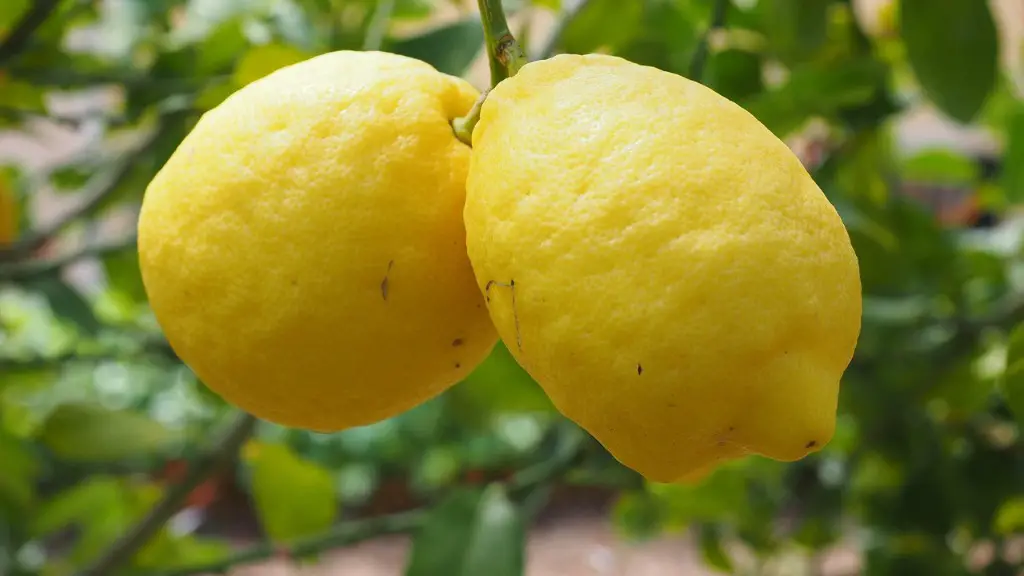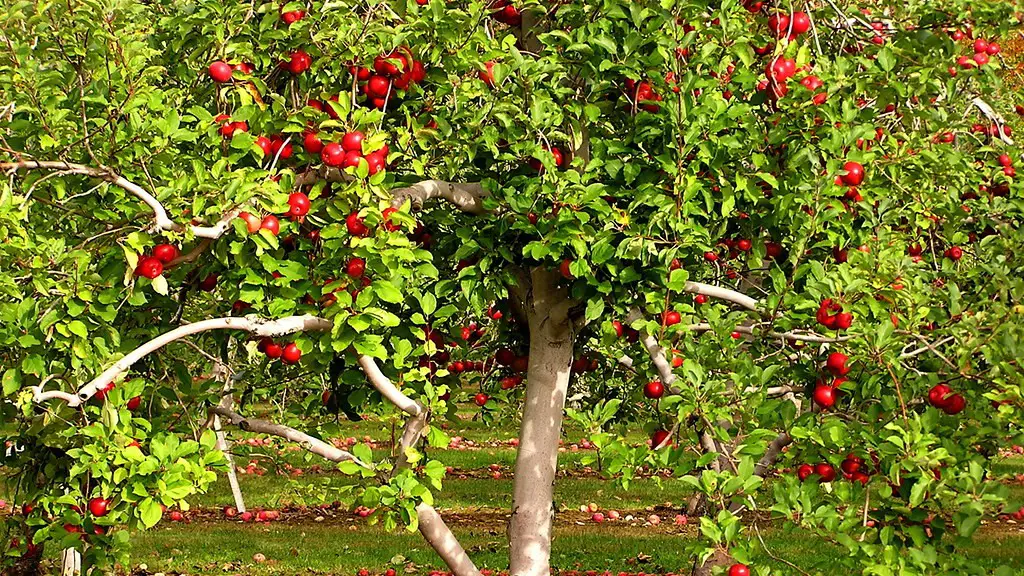Avocados are a complex fruit. It requires careful attention to its environment and careful planning for its growth. Transplanting an avocado tree from pot to ground is a big decision that can have serious impacts on the health of the tree and its growth. Knowing when to transplant an avocado tree is an important step in getting a healthy, productive tree.
Transplanting an avocado tree is a complex process that must be done carefully in order to ensure successful growth. It’s important to understand the stages of an avocado tree’s development and growth, as well as its environmental needs in order to make a successful transplant. The ideal time to transplant an avocado tree is when it is still very young and the roots are small and manageable. This allows the tree to firmly establish in its new environment before it grows too large.
When transplanting an avocado tree, it’s important to take into account the tree’s root ball size. If the root ball is too large, it can be difficult to position and will have difficulty establishing in its new environment. To ensure successful growth, the root ball should be a few inches larger than the container in which it was grown. It is also important to be aware of the environmental conditions of the soil, such as pH levels and the presence of any parasites or diseases.
In addition to the size of the root ball, it’s also important to consider the type of soil that’s best for your avocado tree. The soil should be well draining, with a neutral pH, and provide adequate nutrition for the tree. If the soil is too acidic or alkaline, it can have a negative impact on the health of the tree. Additionally, a soil that doesn’t have enough nutrients can cause the tree to be stunted.
The time of year is also a factor to consider when transplanting an avocado tree. Transplanting in the late spring or early summer provides the tree with more time to acclimate to the new environment. It is also important to be aware of the weather. If the weather is too hot or too cold, the transplant could be unsuccessful. Additionally, it is important to ensure that the tree is properly watered before and after transplanting.
In addition to environmental factors, it is also important to keep in mind the tree’s genetic makeup. Different varieties of avocado trees have different needs when it comes to transplanting. It is important to research the variety of tree you are dealing with, as well as its particular needs when it comes to soil, pH levels, and environmental conditions.
The success of your transplanting efforts is also dependent on the care you give the tree after it is placed in the ground. Following the transplant, it is important to keep the tree well-watered and provide adequate nutrition. Additionally, it is important to be aware of any signs of stress, such as wilting leaves or yellowing. If any of these signs are present, it is important to take immediate action to address the issue.
Fertilizing and Pruning
When it comes to avocado trees, fertilizing is an important part of the maintenance process. Fertilizing your tree helps it grow healthy and strong and encourages fruiting. It is important to use a fertilizer that is specifically designed for avocado trees as they require certain nutrients. Additionally, it’s important to ensure that the fertilizer is free of any pests or diseases.
Pruning is also an important part of avocado tree maintenance. Pruning helps keep the tree shaped properly and will reduce the risk of disease and pests. Additionally, pruning the tree encourages new growth by removing any dying branches and creating space for new branches. As with fertilizing, it is important to ensure that any tools used when pruning are clean and free of any pests or diseases.
Avocado trees are complex and require careful planning and maintenance in order for them to grow and produce healthy fruit. Knowing when to transplant an avocado tree from pot to ground is an important part of this process. Taking into account the tree’s size, the soil, the time of year, and the tree’s genetic makeup, as well as providing adequate nutrition and pruning, will help ensure a successful transplant and a healthy, productive tree.
Environmental Stress
When transplanting and caring for an avocado tree, it is important to be aware of environmental stress. Environmental stress can be caused by things such as changes in temperature, humidity, and water quality. Environmental stress can cause changes in the tree’s leaves, such as wilting and yellowing, as well as reduced fruiting.
In order to prevent environmental stress, it is important to ensure that the tree is well-watered, with a consistent water supply that is free of contaminants. Additionally, it is important to avoid exposing the tree to excessive heat or cold and to ensure that the tree is planted in an appropriate location where it will receive plenty of light and ventilation.
It is also important to be aware of any signs of stress and to take action to address the issue quickly. If any signs of stress are present, it is important to check the tree’s environment and make sure it is receiving the necessary care. Additionally, it is important to provide additional fertilizer and prune any excess foliage to help reduce stress on the tree.
Insects and Pests
When caring for an avocado tree, it is important to be aware of any insects and pests that can cause damage to the tree. Common pests and insects include caterpillars, aphids, mites, scale, and mealybugs. These pests can cause damage to the tree’s leaves, berries, and fruit, as well as stunt the tree’s growth.
In order to prevent insects and pests from damaging the tree, it is important to regularly inspect the tree for any signs of pests. Additionally, it is important to avoid using any chemicals or pesticides that are not specifically designed for avocado trees, as this can damage the tree’s health. If any pests are present, it is important to take action to address the issue quickly in order to prevent further damage.
It is also important to be aware of any disease that can harm the tree. Common diseases include Leaf Spot and Root Rot. As with pests, it is important to inspect the tree regularly for any signs of disease and to take action to address the issue quickly. Additionally, it is important to provide the tree with adequate nutrition and prune any excess foliage to reduce the risk of any diseases.
Watering
Watering is an essential part of caring for an avocado tree. It is important to provide the tree with a consistent supply of water in order to ensure healthy growth and fruiting. It is important to water the tree regularly in order to keep the soil moist, but not soggy. Additionally, it is important to avoid over-watering, as this can lead to root rot.
When it comes to watering an avocado tree, it is important to consider the time of year and the particular needs of the tree. In the summer months, it is important to provide the tree with more water, as the hot and dry weather can cause stress on the tree. Additionally, water should be provided in the winter months, but not as frequently.
It is also important to be aware of the water quality. If the water is contaminated with salts and chemicals, this can cause damage to the tree. If the water is of poor quality, it is important to use rainwater or filtered water. Additionally, it is important to ensure that water runoff is diverted away from the tree in order to avoid any damage.
Harvesting
Harvesting an avocado tree is a tricky task, as the timing of the harvest can have serious impacts on the quality of the fruit. It is important to understand the different stages of the fruit’s development in order to determine when the fruit is ready to be harvested. Additionally, it is important to be aware of any signs of stress and to inspect the fruit for any signs of disease or pests.
The best time to harvest an avocado is when the fruit is slightly soft, but not overly ripe. It is important to be patient when harvesting, as harvesting too early can result in immature fruit and harvesting too late can result in over-ripe fruit. Additionally, it is important to take care when harvesting, as any rough handling can damage the fruit.
Once the fruit is harvested, it is important to store the fruit properly in order to help it stay fresh and to reduce the risk of spoilage. It is important to store the fruit in cool and dry conditions and to avoid putting the fruit in direct sunlight. Additionally, it is important to avoid storing the fruit in plastic bags or containers, as this can trap in moisture and lead to spoilage.
Harvesting an avocado tree requires careful planning and timing in order to ensure the best quality fruit. By understanding the stages of the fruit’s development, being aware of signs of stress, and taking care in harvesting and storing the fruit, it is possible to have a successful and productive harvest.




